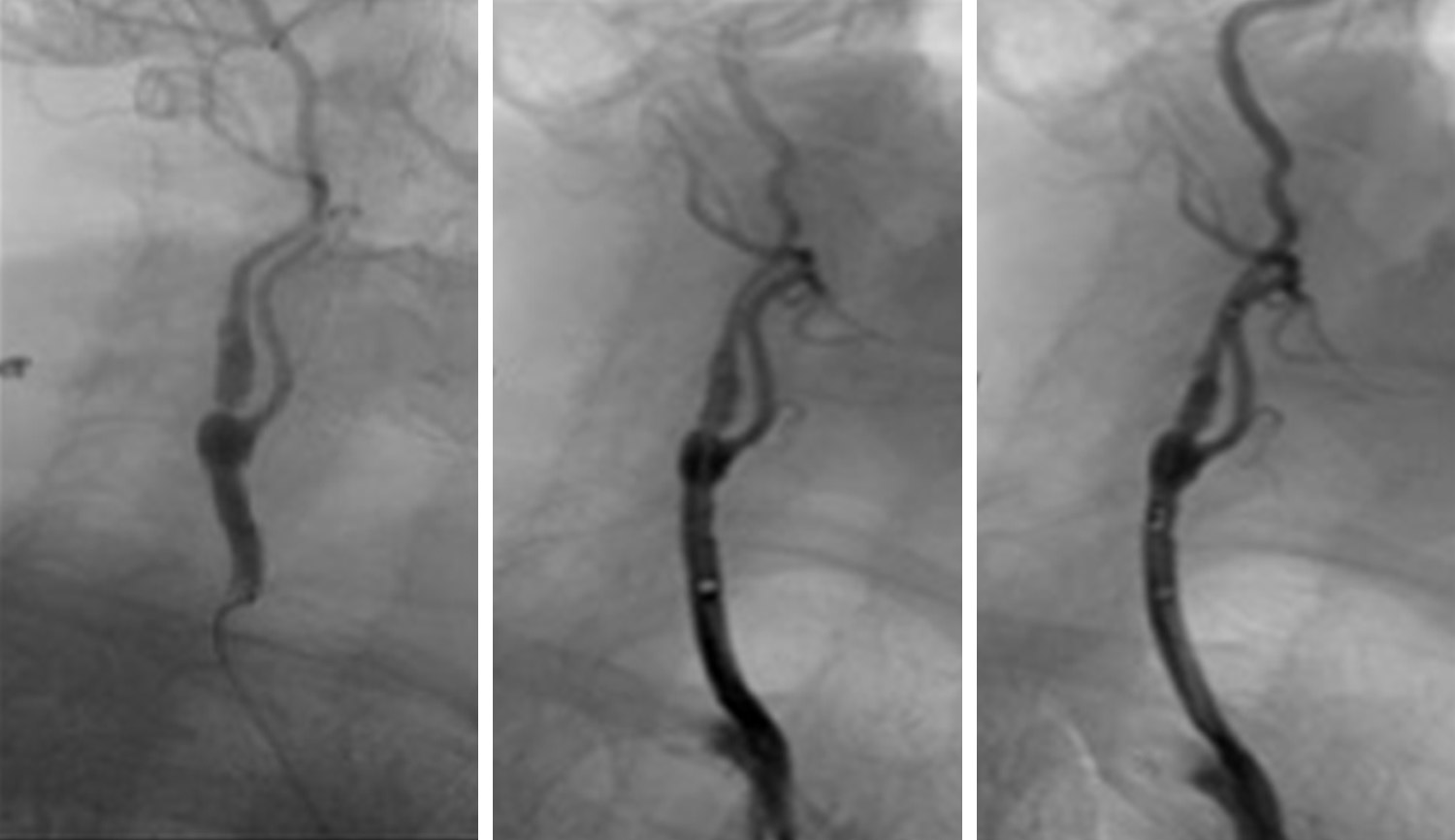Carotid Arteries
What are the carotid arteries?
The carotid arteries are the blood vessels that carry oxygen-rich blood to the head and brain. Located on each side of the neck, these arteries can easily be felt pulsating by placing your fingers gently either side of your windpipe. The carotid arteries are essential as they supply blood to the large front part of the brain. This is the brain tissue where thinking, speech, personality and sensory (our ability to feel) and motor (our ability to move) functions reside.
What is carotid artery disease?
Carotid artery disease is defined by the narrowing or blockage of this artery due to plaque build-up. The process that blocks these arteries (atherosclerosis) is basically the same that causes both coronary artery disease ( heart attacks)and peripheral arterial disease (limb loss). The slow build-up of plaque (which is a deposit of cholesterol, calcium, and other cells in the artery wall) is caused mostly by smoking, high blood pressure, diabetes, and high cholesterol.
A stroke can occur if a piece of plaque or a blood clot breaks off from the wall of the carotid artery and travels to the smaller arteries of the brain blocking the supply of oxygen to the brain.

This is sometimes called “an ischemic event.” This could be a stroke, which is permanent loss of brain function, or a “transient ischemic attack” (or TIA), which implies a temporary alteration of brain function.
Stroke can also occur from other causes, for example from heart disease (heart valve problems, heart failure, or atrial fibrillation) or if bleeding occurs in brain tissue. Nevertheless, carotid artery disease is one of the most common causes of stroke. More than half of the strokes occur because of carotid artery disease.
What are the risk factors for carotid artery disease?
Carotid artery disease is part of the arterial circulatory system and has similar risk factors as peripheral vascular disease (PVD) and coronary artery disease( heart disease).
- Age
- Smoking
- Hypertension
- Diabetes
- High cholesterol, and especially high amounts of “low density lipoprotein” (or LDL, the bad form of cholesterol)—Family history of atherosclerosis (build-up of plaque in the peripheral, coronary or carotid arteries)
- Family history of atherosclerosis (build-up of plaque in the peripheral, coronary or carotid arteries)If you already have peripheral vascular disease (blockages in the legs) or coronary artery disease, ( blockages in the heart arteries) you are at high risk for carotid artery disease and stroke.
- If you already have peripheral vascular disease (blockages in the legs) or coronary artery disease, ( blockages in the heart arteries) you are at high risk for carotid artery disease and stroke.
How is carotid artery disease diagnosed?
The diagnosis of carotid artery disease is usually done by a duplex ultrasound study of the neck arteries (a carotid artery duplex scan). Alternatively, the artery can be visualized by a standard angiogram or a magnetic resonance angiogram (MRA), or a CT Angiogram.
How is carotid artery disease treated?
Treatment for carotid artery disease normally consists of correction of those risk factors that cause artery blockages, specific medications (usually antiplatelet medication and cholesterol lowering medication), and sometimes treatment to open the narrowed carotid artery by either open surgery or angioplasty and stent. Anyone with any degree of narrowing of a carotid artery, or with any history of stroke or TIA, should quit the use of all tobacco products immediately, control their high blood pressure, normalize their blood cholesterol by diet and medications, and exercise regularly.
Prevention
Take care of your health through exercise and proper nutrition and take all medications as your doctor prescribes. If you have risk factors for carotid artery disease you should talk with your health care professional. If you have any symptoms, such as loss of sensation or power in the arm or leg, difficulty in talking, never hesitate or delay to seek help. Minutes are critical. It’s up to you to do all you can to reduce your risk. No surprise — prevention is the best medicine!
Finally…
This website should have answered some of your questions, but remember that this is only a starting point for discussion about your treatment with the doctors looking after you.